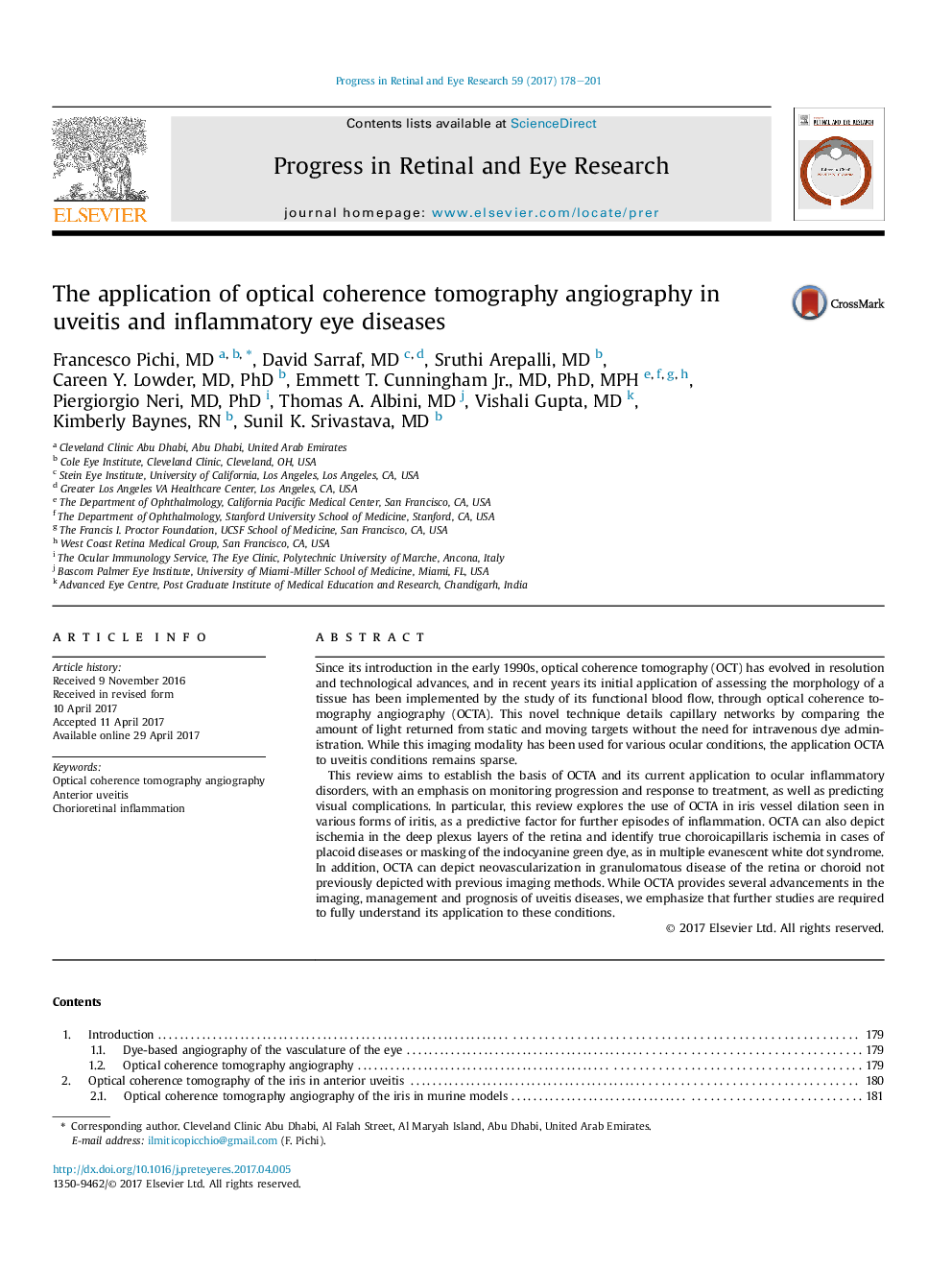| Article ID | Journal | Published Year | Pages | File Type |
|---|---|---|---|---|
| 5705681 | Progress in Retinal and Eye Research | 2017 | 24 Pages |
Abstract
This review aims to establish the basis of OCTA and its current application to ocular inflammatory disorders, with an emphasis on monitoring progression and response to treatment, as well as predicting visual complications. In particular, this review explores the use of OCTA in iris vessel dilation seen in various forms of iritis, as a predictive factor for further episodes of inflammation. OCTA can also depict ischemia in the deep plexus layers of the retina and identify true choroicapillaris ischemia in cases of placoid diseases or masking of the indocyanine green dye, as in multiple evanescent white dot syndrome. In addition, OCTA can depict neovascularization in granulomatous disease of the retina or choroid not previously depicted with previous imaging methods. While OCTA provides several advancements in the imaging, management and prognosis of uveitis diseases, we emphasize that further studies are required to fully understand its application to these conditions.
Related Topics
Life Sciences
Neuroscience
Sensory Systems
Authors
Francesco MD, David MD, Sruthi MD, Careen Y. MD, PhD, Emmett T. MD, PhD, MPH, Piergiorgio MD, PhD, Thomas A. MD, Vishali MD, Kimberly RN, Sunil K. MD,
